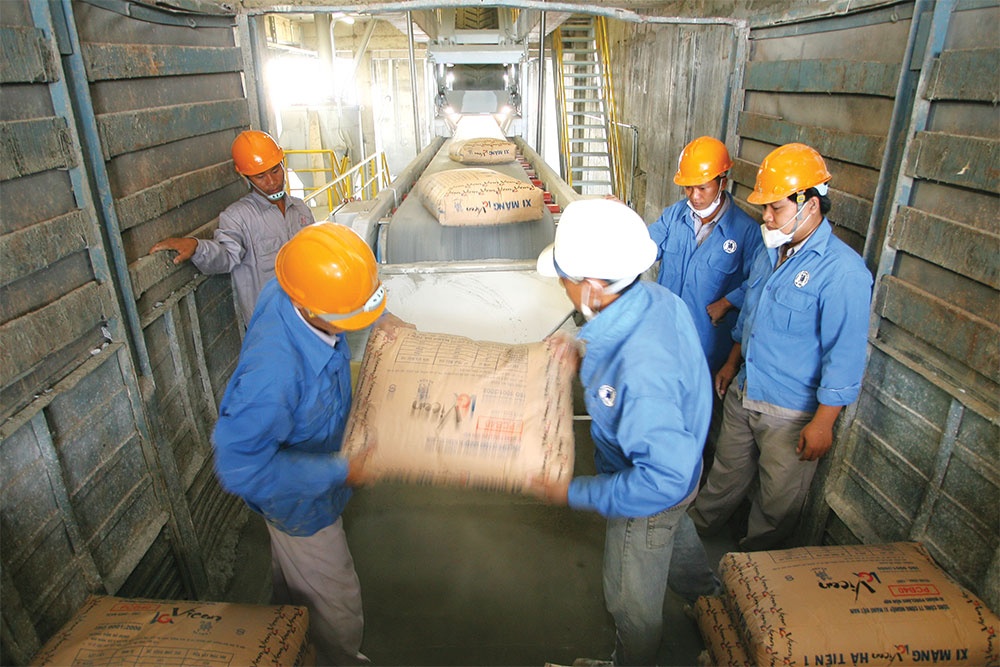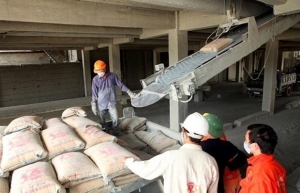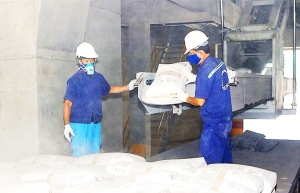Record input costs thwart cement groups
 |
| The cost for logistics, electricity, and more are leaving an impact on business results, Photo: Le Toan |
Two weeks ago, the People’s Committee of Hoa Binh province authorised investors to implement the Xuan Son Cement Plant project. The facility is anticipated to begin operations in the fourth quarter of 2024 with an annual capacity of 2.3 million tonnes.
In addition to Xuan Son, a number of new cement facilities went into operation in 2023, such as Line 3-Xuan Thanh Cement (4.5 million tonnes), Dai Duong Cement (2.5 million tonnes), and Long Thanh Cement (2.5 million tonnes). If the Xuan Son project is included, the current cement supply exceeds 120 million tonnes.
In contrast to the exhilaration of supply, demand is a troublesome issue. Vietnam’s cement industry faces oversupply as its greatest challenge. The director of Tan Quang Cement JSC in the province of Tuyen Quang, Le Danh Thang, stated that the unit’s production in the first half of the year “did not meet the plan, and it is projected to drop about 80,000 metric tonnes due to no output.” The firm is presently pausing production to perform machine maintenance.
According to the Ministry of Construction, cement production in the first six months of 2023 is estimated to be 39 million tonnes, a 7 per cent decrease. Domestic consumption totalled 29 million MT, a decline of 8 per cent compared to the same period in 2022.
Currently, cement factories in Vietnam have a design capacity of up to 120 million tonnes per year, but cement demand is only about 65 million tonnes.
“Exports of cement and clinker products reached 14 million tonnes in the first half of 2023, a 15 per cent decline from the same period in 2022. The anticipated export value is $700 million,” said Thai Duy Sam, general secretary of the Vietnam Association for Building Materials (VABM). “China is Vietnam’s major export market for cement. However, the export value of this product to China fell by 95 per cent in Q1 compared to the same period last year.”
According to Sam, the cement industry’s retail price has dropped, but the cost of electricity, coal, and other inputs for cement production have risen or reached a high level.
“Input prices continued to rise: electricity prices, which account for 35 per cent of production costs, increased, while coal and logistical prices remained elevated. This has a significant impact on the production and efficacy of businesses, leaving them struggling to ensure profits,” Sam added.
The real estate industry deteriorated, resulting in the downturn of the whole construction sector. However, SSI Research’s Hoang Anh Tuan, stated that the profit of cement companies is likely to recover by the end of the year.
“Government solutions will partially support the construction industry, particularly the cement industry. The value of the public investment plan for 2023 is projected to climb by one-quarter over the same time period,” Tuan said. “Together with a $5 billion support programme for social housing, which functions as the primary propelling factor, domestic cement consumption will be supported over the medium to long term.”
Sharing the same viewpoint, Thang from Tan Quang Cement stated, “Production won’t stabilise again until the construction market warms up and public investment is increased further.”
The company expressed its optimism that a new resolution will shortly be implemented, enabling businesses to adapt and develop sustainably over the next few years.
However, according to Sam from the VABM, the aforementioned solutions are only transient and the oversupply situation will not improve if the reality of banks lending to invest in cement ventures remains rampant.
“Commercial banks need to investigate and evaluate the potential of businesses in order to avoid exacerbating the imbalance between supply and demand, which could result in bad debts in the current pessimistic market situation,” Sam added.
 | A strenuous year ahead in cement Vietnam’s cement and clinker export in the first four months of this year continued to be hurt by high inflation in major cement export markets. |
 | Profits plunging for cement businesses The cement industry’s financial performance continues to slide, with Q2 losses piling up due to sluggish consumption and rising input costs. |
What the stars mean:
★ Poor ★ ★ Promising ★★★ Good ★★★★ Very good ★★★★★ Exceptional
Related Contents
Latest News
More News
- Takeda supports health resilience amid climate change challenges (December 18, 2025 | 12:39)
- Mondelez Kinh Do - a chapter of purpose-led leadership in Vietnam (December 18, 2025 | 09:44)
- VNPAY services receive the highest-level PCI DSS international security certificates for six consecutive years (December 17, 2025 | 23:47)
- PPL extends its reach into ASEAN (December 17, 2025 | 15:44)
- Over 600 BUV graduates meeting quality benchmarks across triple quality assurance levels (December 17, 2025 | 13:00)
- HEINEKEN Vietnam partners with Ho Chi Minh City Traffic Police on road safety drive (December 17, 2025 | 09:42)
- BUV and China’s CSCSE sign MoU to boost educational cooperation (December 17, 2025 | 08:00)
- PVT Logistics honoured with ‘Fast Enterprise Award’ at APEA 2025 (December 16, 2025 | 18:22)
- Empowering Sustainable Data Centers with Smart Infrastructure Solutions (December 16, 2025 | 13:59)
- Vietjet wins gold ESG transport sustainability award in Taiwan (China) (December 13, 2025 | 22:03)

 Tag:
Tag:






















 Mobile Version
Mobile Version